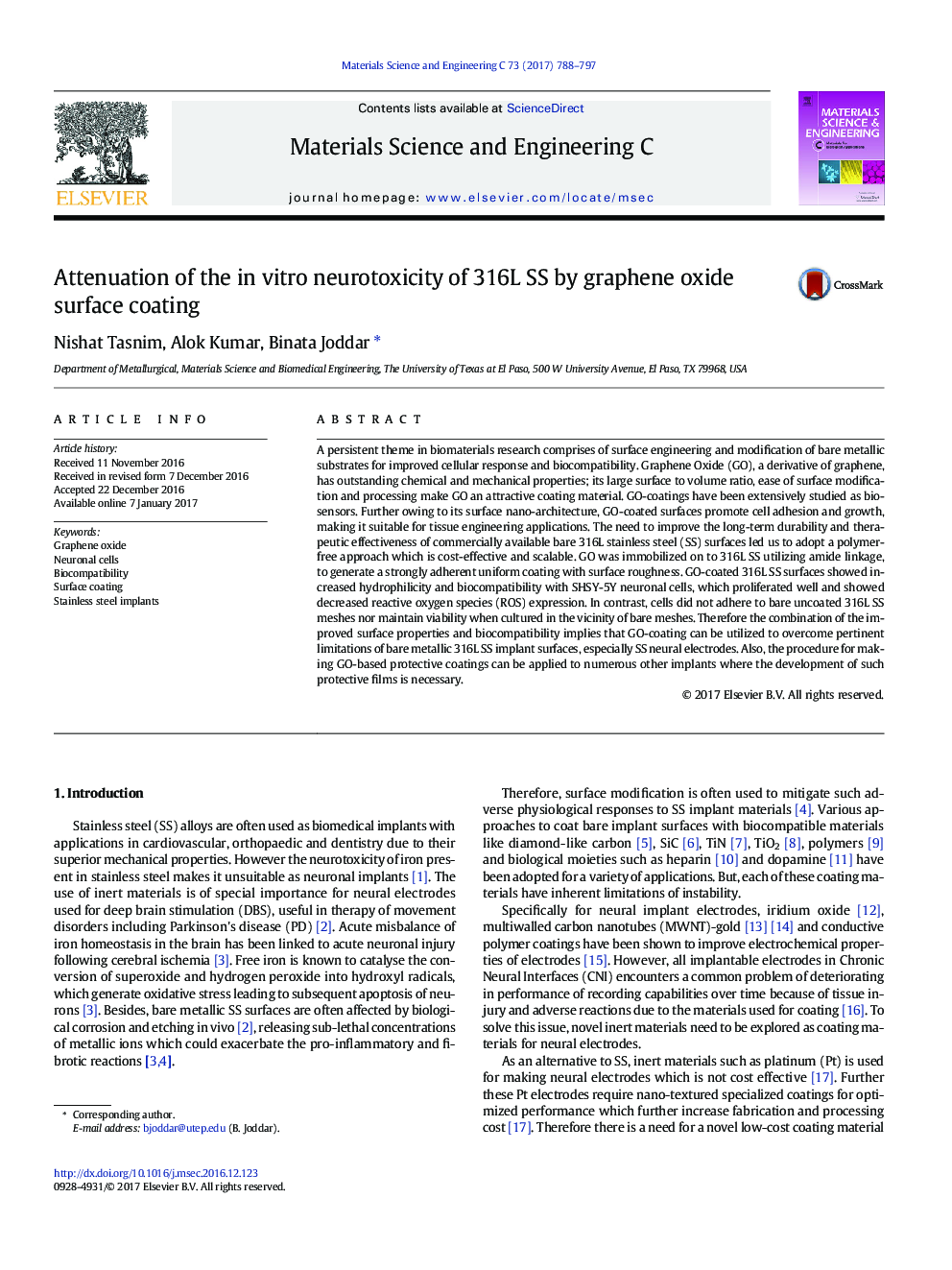| کد مقاله | کد نشریه | سال انتشار | مقاله انگلیسی | نسخه تمام متن |
|---|---|---|---|---|
| 5434987 | 1509148 | 2017 | 10 صفحه PDF | دانلود رایگان |

- GO was immobilized on to 316L SS utilizing carbodiimide chemistry to generate a strong adherent uniform nano coating.
- GO-modified surfaces showed increased hydrophilicity and biocompatibility with SH5YSY cells cultured atop these surfaces.
- Proliferation and alignment of the cells with the underlying structure was found well, cultured on GO-coated surface.
- GO-coating can be utilized to overcome the limitation of bare 316L SS implant surfaces.
A persistent theme in biomaterials research comprises of surface engineering and modification of bare metallic substrates for improved cellular response and biocompatibility. Graphene Oxide (GO), a derivative of graphene, has outstanding chemical and mechanical properties; its large surface to volume ratio, ease of surface modification and processing make GO an attractive coating material. GO-coatings have been extensively studied as biosensors. Further owing to its surface nano-architecture, GO-coated surfaces promote cell adhesion and growth, making it suitable for tissue engineering applications. The need to improve the long-term durability and therapeutic effectiveness of commercially available bare 316L stainless steel (SS) surfaces led us to adopt a polymer-free approach which is cost-effective and scalable. GO was immobilized on to 316L SS utilizing amide linkage, to generate a strongly adherent uniform coating with surface roughness. GO-coated 316L SS surfaces showed increased hydrophilicity and biocompatibility with SHSY-5Y neuronal cells, which proliferated well and showed decreased reactive oxygen species (ROS) expression. In contrast, cells did not adhere to bare uncoated 316L SS meshes nor maintain viability when cultured in the vicinity of bare meshes. Therefore the combination of the improved surface properties and biocompatibility implies that GO-coating can be utilized to overcome pertinent limitations of bare metallic 316L SS implant surfaces, especially SS neural electrodes. Also, the procedure for making GO-based protective coatings can be applied to numerous other implants where the development of such protective films is necessary.
174
Journal: Materials Science and Engineering: C - Volume 73, 1 April 2017, Pages 788-797